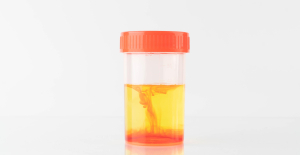Six years after its implementation in France, the Nutri-score has become an essential benchmark for many consumers, even if it is not obligatory for manufacturers. This labeling assigns each food product a score ranging from A to E. It is based on an algorithm which takes into account favorable nutrients (fiber, proteins) and unfavorable nutrients (sugars, saturated fats, salt, etc.).
Today, 6 other European countries (Belgium, Germany, Luxembourg, Netherlands, Spain and Switzerland) have adopted it. Under the leadership of a committee of experts from 7 countries, the label is subject to regular updates to follow the evolution of nutritional recommendations. Expected since the start of 2023, an update of the Nutri-score will come into force from January 1, 2024.
From the start of the school year, consumers should expect to see the price of certain products drop due to their sugar content. “Our objective is not to transform the Nutri-score into a moralizing instrument but to inform the consumer about the nutritional quality of products, which implies a certain transparency on the part of manufacturers regarding their products,” underlines Professor Serge Hercberg, an epidemiologist specializing in nutrition who is at the origin of the system.
» READ ALSO - After the Nutriscore, a Cyberscore to assess the security of sites
All very sweet or very salty products will be heavily penalized and the impact will be significant for breakfast cereals. Most brands, with the exception of certain very lightly sweetened mueslis, will not be able to display an A score. All will preferably be classified based on a C rating. “The Chocapic brand had significantly reduced the sugar content of its recipe so that They are rated A, which is admirable. However, these cereals still contain too much sugar and it is not legitimate for them to keep this score, even if they are healthier than other D or E cereals,” explains Serge Hercberg. In the same way, ready-to-eat meals will tend to move from categories A or B to B or C, or even D for industrial pizzas.
Only certain pressed cheeses (like Emmental) will gain a point, going from D to C, due to their low salt and bad fat (saturated fat) content. Better grades, A or B, are also expected for certain foods containing good fats, such as fatty fish (without added salt or oil), while red meat will tend to systematically fall behind the scores of fish and poultry.
Oils will be better discriminated according to their quantity of bad fats. “Olive, rapeseed and sunflower oils will be rated B, because they are less rich in saturated fatty acids than other oils, which will go to C or D, while coconut oil and butter will remain in E », Reports Professor Hercberg. For pasta and bread, whole products, rich in fiber, will be better rated (A) than their refined counterparts (B or C).
» READ ALSO - Do you really know the Nutri-Score?
Big changes are also planned for drinks. Those which contain low quantities of sugar (less than 2 g/100 ml) will now be classified as Nutri-score B, while all others will be maintained in C, D or E. Drinks containing sweeteners, mainly sodas, will be more penalized, passing into categories C, D or E.
The new recommendations provide for a shift from milk, milk drinks (flavored and sweetened milks), fermented milk-based drinks (drinkable yogurts) and plant-based drinks (almond, soy, rice, etc.) to the beverage category whereas until now they were included in “general foods”. “These drinks were included in general foods because they contain milk. However, the scientific committee realized that they then benefited from a lower penalty for their sugar content than other drinks. With this change, these milk drinks will now be categorized more consistently with nutritional recommendations,” insists Professor Hercberg.
New, much stricter scores will therefore be assigned to them. From the start of the school year, flavored milks will mainly have D or E scores and will no longer be able to be classified A or B. The same goes for sweetened and flavored drinking yogurts. Several plant-based drinks, skimmed or semi-skimmed milk, may still carry the B label, but among the drinks, only water will still be classified A.
If all of these changes take effect from January 1, we will nevertheless have to wait a few months to see the new labels, until manufacturers in the 7 countries can sell off their stocks.

 Gaza: under the spotlight, the Israeli-Palestinian conflict shakes up the Eurovision contest
Gaza: under the spotlight, the Israeli-Palestinian conflict shakes up the Eurovision contest Black soldier killed by a police officer in the United States: the sheriff publishes the video of the arrest
Black soldier killed by a police officer in the United States: the sheriff publishes the video of the arrest In Malmö, the Eurovision party transformed into entrenched camps
In Malmö, the Eurovision party transformed into entrenched camps In Russia, Vladimir Putin stigmatizes “Western elites”
In Russia, Vladimir Putin stigmatizes “Western elites” “Mediterranean diet” or “DASH”, two good tips for eating better
“Mediterranean diet” or “DASH”, two good tips for eating better Fatal case of cholera in Mayotte: the epidemic is “contained”, assures the government
Fatal case of cholera in Mayotte: the epidemic is “contained”, assures the government The presence of blood in the urine, a warning sign of bladder cancer
The presence of blood in the urine, a warning sign of bladder cancer A baby whose mother smoked during pregnancy will age more quickly
A baby whose mother smoked during pregnancy will age more quickly Artificial intelligence lies, cheats and deceives us, and that's a problem, experts warn
Artificial intelligence lies, cheats and deceives us, and that's a problem, experts warn Google Cloud mistakenly deletes UniSuper fund account and deprives 600,000 Australians of their superannuation
Google Cloud mistakenly deletes UniSuper fund account and deprives 600,000 Australians of their superannuation IBM, Amazon, Hager... These record investments expected at the Choose France summit
IBM, Amazon, Hager... These record investments expected at the Choose France summit Boeing's black streak: a second Air France flight diverted in three days for “a smell of heat”
Boeing's black streak: a second Air France flight diverted in three days for “a smell of heat” Paola Locatelli: “Influence is comfortable but cinema gives me adrenaline”
Paola Locatelli: “Influence is comfortable but cinema gives me adrenaline” Swifties attack hotels in Lyon
Swifties attack hotels in Lyon Radical Optimism by Dua Lipa, a tangy album in half-tone
Radical Optimism by Dua Lipa, a tangy album in half-tone Peter Weir rewarded for his career with an honorary Golden Lion at the Venice Film Festival in September
Peter Weir rewarded for his career with an honorary Golden Lion at the Venice Film Festival in September Omoda 7, another Chinese car that could be manufactured in Spain
Omoda 7, another Chinese car that could be manufactured in Spain BYD chooses CA Auto Bank as financial partner in Spain
BYD chooses CA Auto Bank as financial partner in Spain Tesla and Baidu sign key agreement to boost development of autonomous driving
Tesla and Baidu sign key agreement to boost development of autonomous driving Skoda Kodiaq 2024: a 'beast' plug-in hybrid SUV
Skoda Kodiaq 2024: a 'beast' plug-in hybrid SUV The home mortgage firm rises 3.8% in February and the average interest moderates to 3.33%
The home mortgage firm rises 3.8% in February and the average interest moderates to 3.33% This is how housing prices have changed in Spain in the last decade
This is how housing prices have changed in Spain in the last decade The home mortgage firm drops 10% in January and interest soars to 3.46%
The home mortgage firm drops 10% in January and interest soars to 3.46% The jewel of the Rocío de Nagüeles urbanization: a dream villa in Marbella
The jewel of the Rocío de Nagüeles urbanization: a dream villa in Marbella Diving into the secrets of the National Assembly
Diving into the secrets of the National Assembly Institutions: senators want to restore the accumulation of mandates and put an end to the automatic presence of ex-presidents on the Constitutional Council
Institutions: senators want to restore the accumulation of mandates and put an end to the automatic presence of ex-presidents on the Constitutional Council Europeans: David Lisnard expresses his “essential and vital” support for François-Xavier Bellamy
Europeans: David Lisnard expresses his “essential and vital” support for François-Xavier Bellamy Facing Jordan Bardella, the popularity match turns to Gabriel Attal’s advantage
Facing Jordan Bardella, the popularity match turns to Gabriel Attal’s advantage These French cities that will boycott the World Cup in Qatar
These French cities that will boycott the World Cup in Qatar NBA: Boston and Dallas rely on their star duos to win
NBA: Boston and Dallas rely on their star duos to win Athletics: Samba-Mayela improves her own French record in 100m hurdles
Athletics: Samba-Mayela improves her own French record in 100m hurdles “We’re not going to catch fire,” tempers Louis Bielle-Biarrey (Bordeaux-Bègles)
“We’re not going to catch fire,” tempers Louis Bielle-Biarrey (Bordeaux-Bègles) Ligue 1: suspense on all levels
Ligue 1: suspense on all levels


















